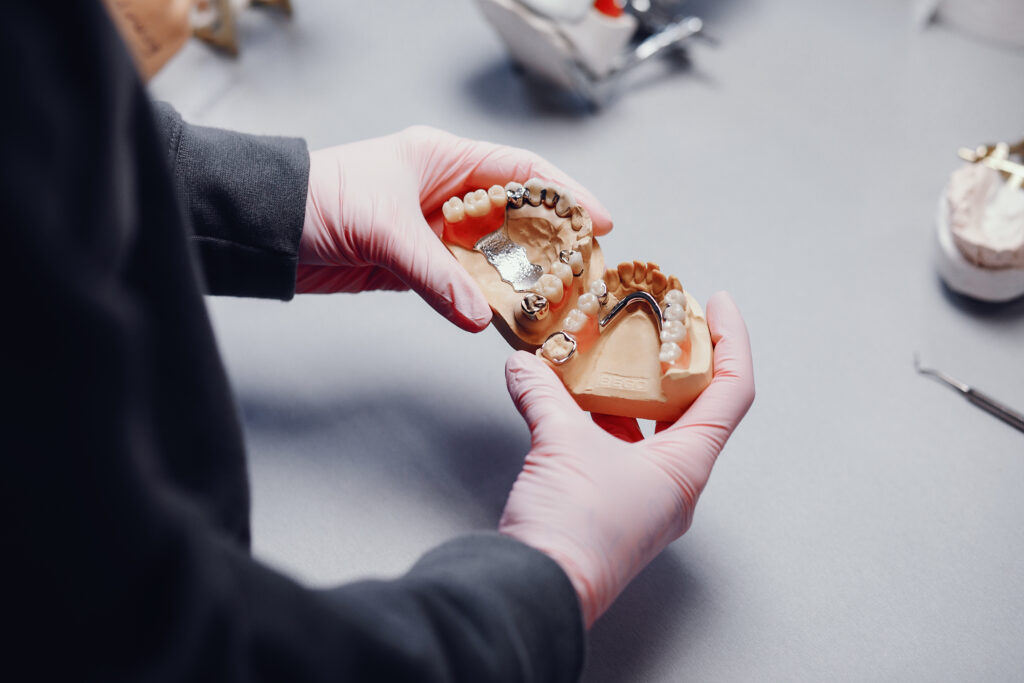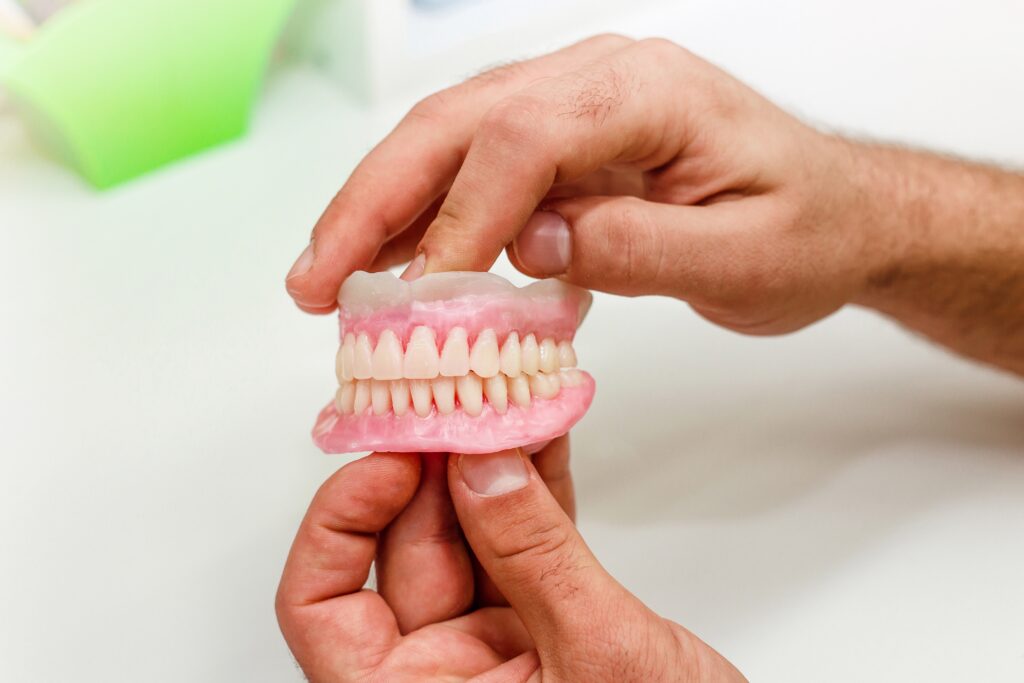What is a Prosthodontist?
A prosthodontist is a dental specialist who focuses on the aesthetic restoration and replacement of teeth. Their expertise lies in combining modern technology with advanced techniques to restore both functionality and beauty to your smile.
Modern Advancements in Dental Care
Thanks to advancements in dental technology, prosthodontists now offer a variety of treatments to cater to each patient’s unique needs. Whether you’re seeking subtle changes or major repairs, prosthodontists provide exceptional care every step of the way.
Comprehensive Treatment Options
Our prosthodontic services include:
- Dentures – For full-mouth tooth replacement.
- Removable Partial Dentures – For selective missing teeth.
- Stationary Bridges – For a permanent solution to replace missing teeth.
No matter your choice, our team ensures that every solution is tailored for comfort and a natural appearance.
Restoring Smiles, Redefining Confidence
Prosthodontists play a vital role in developing cutting-edge restoration techniques, ensuring you maintain a healthy, attractive smile. With expertise in creating lifelike dental restorations, your prosthodontist works to enhance both your dental health and overall appearance.
Dental Implants: A Modern Alternative
Dental implants are a groundbreaking solution for replacing missing teeth. Unlike traditional methods, implants provide a permanent, secure foundation for your smile. We offer:
- Cosmetic Services to enhance aesthetics.
- Advanced Techniques combined with personalized care.
Whether it’s restoring a single tooth or a complete set, we’re here to give you the best possible results.
Other Services
Dentures: A Replacement for Missing Teeth
Dentures are a solution for replacing missing teeth that can be removed and put back into your mouth as needed. Depending on each individual patient case, they may receive either full or partial dentures.
Full Dentures
Full dentures are used when all of the natural teeth are removed from the mouth and replaced with a complete set of dentures. There are two types of full dentures:
- Conventional Full Dentures: This type of denture is placed after all the teeth are removed, allowing time for the gum tissue to heal before the dentures are fitted. The healing process may take a few months, during which the patient will be without teeth.
- Immediate Full Dentures: Before having your teeth removed, your dentist takes measurements and fits dentures for your mouth. After the teeth are removed, the dentures are immediately placed. The benefit is that you avoid spending any time without teeth. However, a follow-up visit is necessary to refit the dentures as the jawbone changes shape during healing. The dentures will need to be tightened once the jawbone has healed.

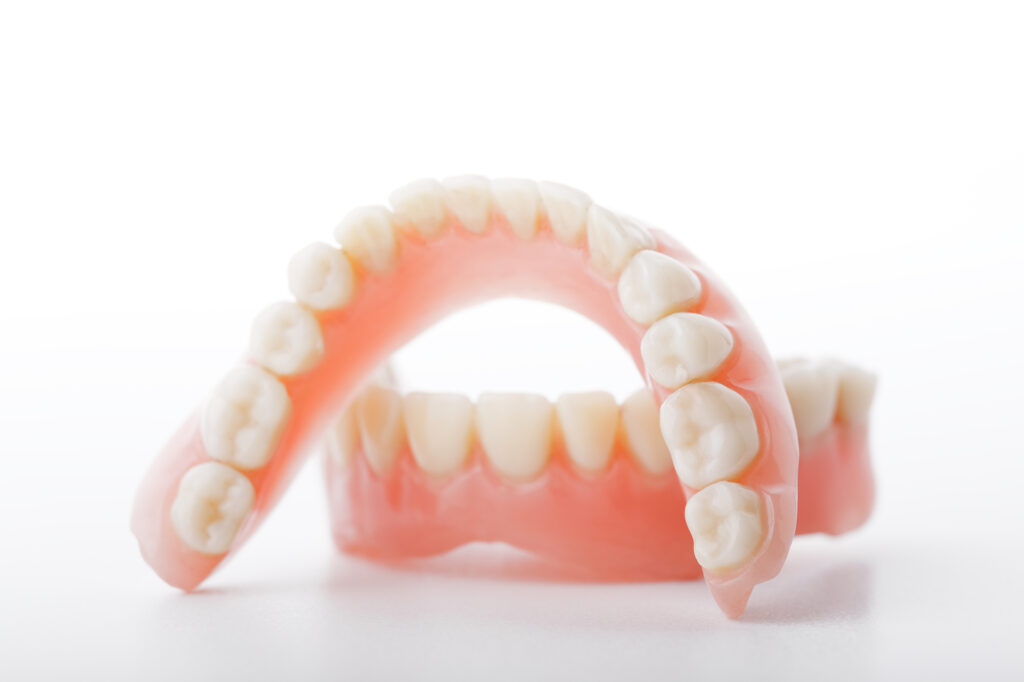
Adjusting to Dentures
Getting used to dentures takes time. The flesh-colored base of the dentures rests over your gums, and some people initially feel they are bulky or that there isn’t enough room for their tongue. Dentures may also feel loose at first. These sensations can temporarily affect the way you eat and talk. Over time, your mouth adapts, and dentures begin to feel more like natural teeth. While they may never feel completely comfortable, they are a significant improvement over not having teeth.
Partial Dentures: A Flexible Option
Partial dentures are an alternative when not all of your teeth need to be removed. They are similar to a bridge but are not a permanent fixture in your mouth.
Adjusting to Partial Dentures
Your dentures may take some time to get used to. The flesh-colored base of the dentures is placed over your gums, and some people report:
- Feeling that the dentures are bulky or that there isn’t enough room for their tongue.
- Experiencing loose-fitting dentures initially.
These sensations may temporarily affect how you eat and talk. However, over time, your mouth becomes accustomed to the dentures, and they begin to feel more like natural teeth. While they may never feel perfectly comfortable, they are far better than the alternative of not having teeth.
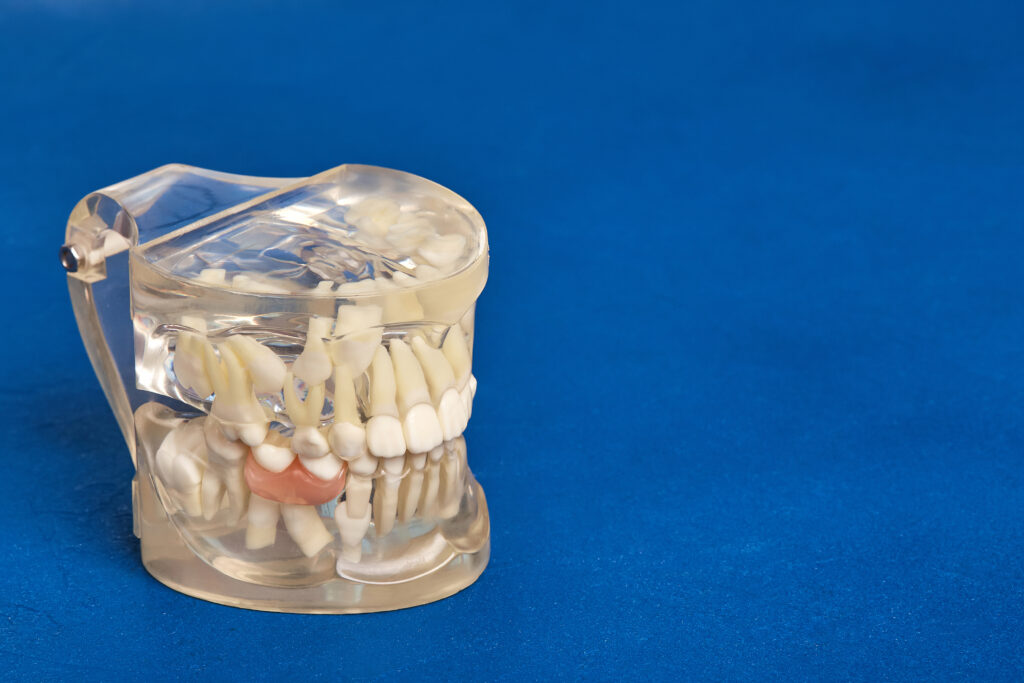
Caring for Your Dentures
Even though dentures are not real teeth, you should care for them as if they are. Follow these tips to maintain your dentures:
- Brush your dentures to remove plaque and food particles before removing them.
- After removal, place your dentures directly into room temperature water or a denture cleaning solution. Never use hot water, as it can warp the dentures.
- Handle your dentures carefully to avoid dropping and damaging them.
- Do not attempt to adjust your dentures yourself. If they feel uncomfortable or loose, always seek assistance from your dentist.
What Are Snap-On Dentures?
A Snap-On Denture is a denture with snaps that connect to implants. This option differs from the “All On Four” procedure, as the denture snaps onto the implants instead of being permanently fixed. Snap-On Dentures offer flexibility and convenience while maintaining a secure fit.
Customizing Your Snap-On Denture
There are several customizable options for Snap-On Dentures, including:
- The number of snaps and implants
- The type of denture
- Whether the denture covers the roof of your mouth
- Your overall preferences for the desired outcome
Why Choose Snap-On Dentures?
Snap-On Dentures provide patients with a long-term, high-quality solution for their smile, offering both functionality and aesthetics to enhance confidence and oral health.
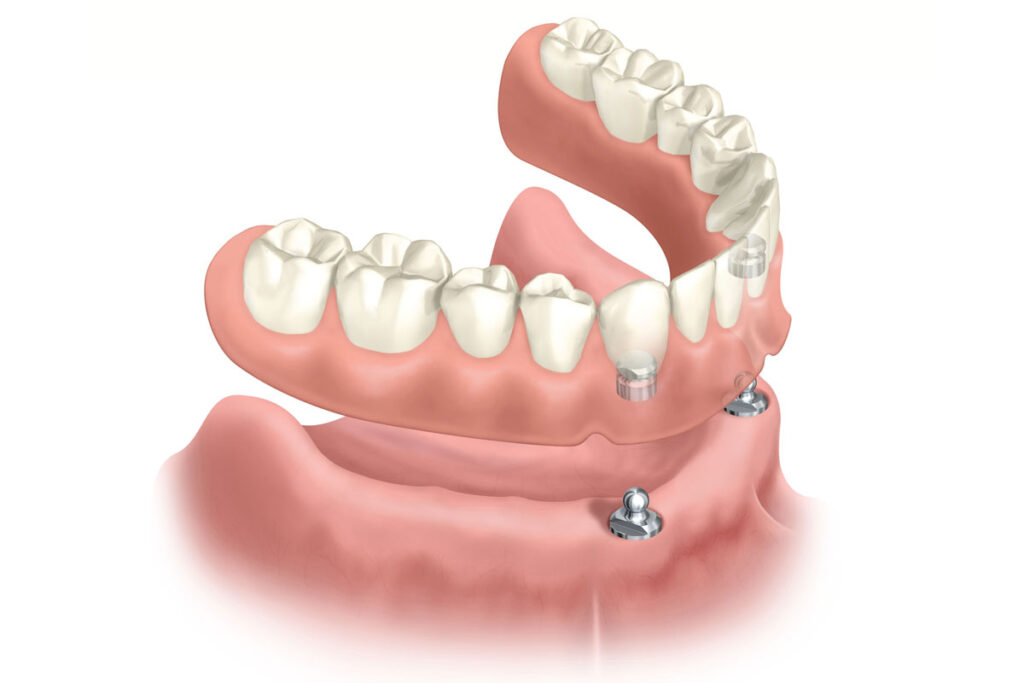

Why Choose Snap-On Dentures?
Snap-On Dentures are a game-changer for denture wearers. They are:
- Easy and painless to use
- Comfortable with a secure fit
- Functional without slipping, tilting, or sliding
- Designed to maintain your existing teeth while providing a beautiful new smile
The Problem with Traditional Dentures
People who wear traditional dentures often experience frustration with their teeth slipping, tilting, or sliding, especially while eating. Many rely on messy denture adhesives to keep their teeth in place, which can be a major irritant.
The Snap-On Denture Solution
At Ridge Road Family Dentistry, we offer an innovative alternative – Snap-On Dentures. Using just a few dental implants to support the dentures, your teeth will be “locked” into place. This means:
- No more messy creams or adhesives
- Your teeth stay securely in place
- Easy removal for cleaning
Say goodbye to the hassle of traditional dentures! Ask us today if you are a candidate for Snap-On Dentures and take the first step toward a comfortable, confident smile.
What Are Dentures?
Dentures are designed to replace missing teeth and soft tissue structures. They are removable and crafted to closely resemble natural tissue, providing a natural and functional appearance. Constructed using durable materials, custom dentures can last for many years with proper care.
Types of Dentures
There are two main types of dentures:
Complete Dentures
Complete dentures are designed to replace all of the teeth in one arch (upper or lower). By working with your dentist, you can choose the shape, size, and shade of the teeth to create a beautiful new smile. Implants can be used to stabilize complete dentures, which are crafted similarly to regular dentures for added security and comfort.
Partial Dentures
Partial dentures are used when one or more teeth are missing, but some natural teeth remain. They help maintain proper spacing of the remaining teeth and prevent them from shifting, ensuring a stable and healthy bite.
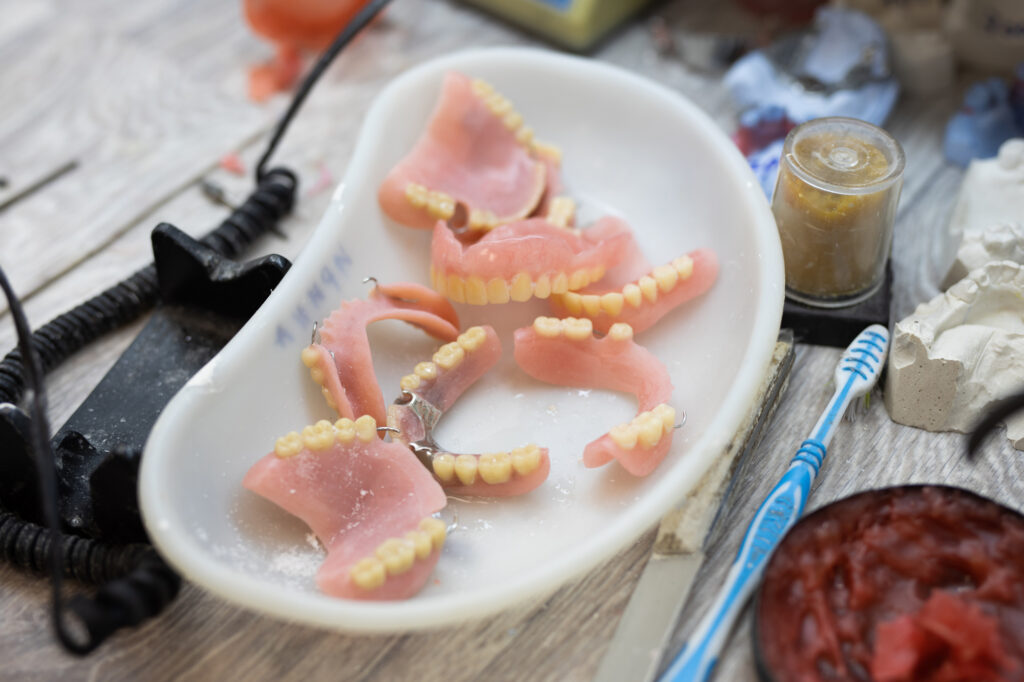

Reasons to Get Dentures
Complete and partial dentures are used to support facial tissues and enhance your smile. They serve the following purposes:
- Complete Dentures: Restore tooth structure when all teeth have been removed.
- Partial Dentures: Restore tooth structure while helping maintain any remaining natural teeth and supporting structures.
Partial and Complete Denture Construction
Getting dentures typically involves multiple appointments over several weeks. The process includes:
- Initial Appointments: Diagnostic impressions are taken to create a mold for your custom dentures.
- Laboratory Fabrication: The impressions are sent to a laboratory to construct your dentures.
- Try-In and Adjustments: Once the dentures are ready, several appointments are scheduled for fitting and adjustments. During these visits, your dentist will check for proper color, shape, and the most comfortable fit.
What Are Dental Bridges?
Dental bridges are an excellent way to replace missing teeth. They literally create a bridge using your existing teeth to span the gap where a tooth is missing. Bridges are crafted from materials such as gold, metal, alloys, or porcelain to ensure strength and durability.
The Process of Creating a Dental Bridge
The creation of a dental bridge involves several steps:
- Creating Abutments: Your existing teeth are recontoured to serve as abutments where the bridge will be attached.
- Taking a Mold: A mold is taken of the prepared area, which is sent to a dental lab to fabricate the bridge.
- Fabrication at the Lab: The lab uses the mold to create a bridge that fits properly and feels as close to natural teeth as possible.
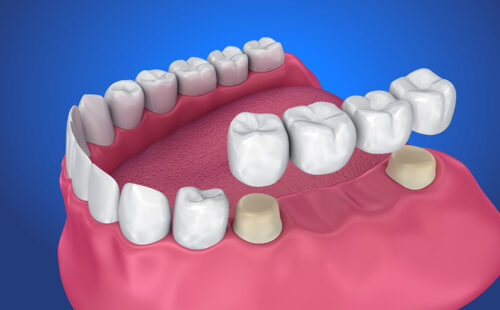
Structure of a Dental Bridge
The bridge consists of:
- Crowns: Two crowns placed on the abutments at either end to anchor the bridge.
- Pontic: The artificial tooth that replaces the missing tooth, filling the gap seamlessly.
With dental bridges, you can restore both the function and appearance of your smile effectively!
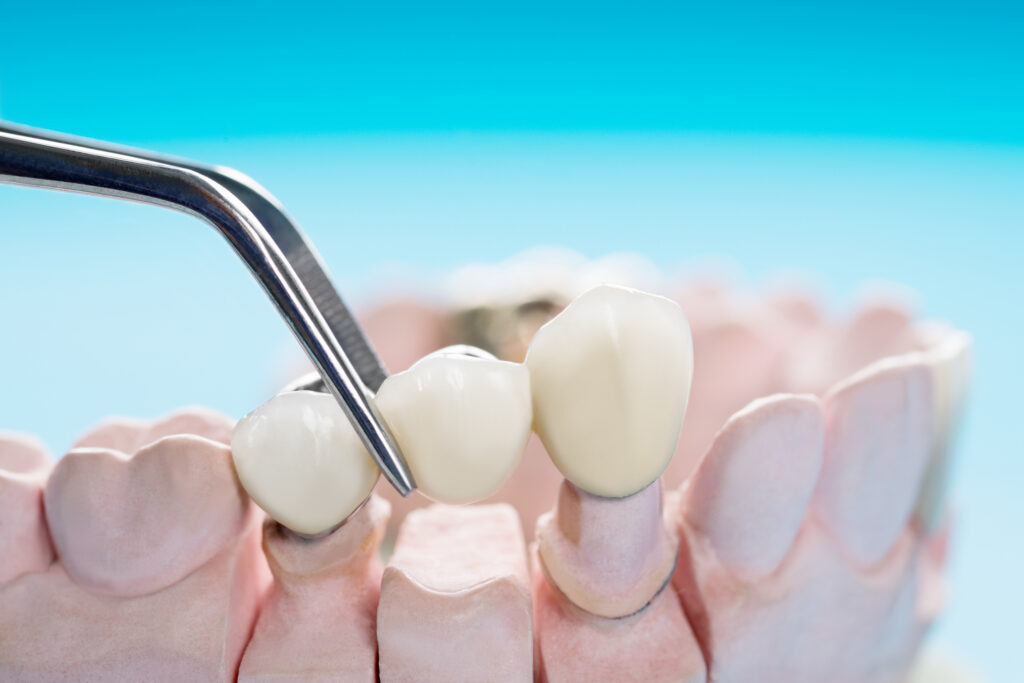
Temporary Bridge Placement
While waiting for the lab to craft your permanent bridge, we will fit you with a temporary bridge. This temporary solution serves to:
- Protect the abutments and exposed gum areas
- Provide a more appealing appearance compared to a missing tooth
Permanent Bridge Placement
Once your permanent bridge is ready, you will have a follow-up visit to set the bridge. During this visit:
- The bridge will be placed on the abutments
- An adhesive will be used to secure the bridge firmly in place
Although it may take a little time to adjust, after a few days the bridge should feel like your natural teeth.
Adjusting to Your Dental Bridge
After having your bridge placed, we recommend:
- Eating soft foods for the first few days
- Transitioning back to your regular diet once you’re comfortable
With proper care, your dental bridge will restore functionality and confidence in your smile.
The Importance of Replacing Missing Teeth
If you are missing a tooth, it is important to consider replacing it. Missing teeth can lead to:
- Structural changes to your mouth and jaw
- Difficulty eating or speaking properly
- Aesthetic concerns that may affect your confidence
Set up an appointment today to restore your smile and maintain the health of your teeth and jaw.
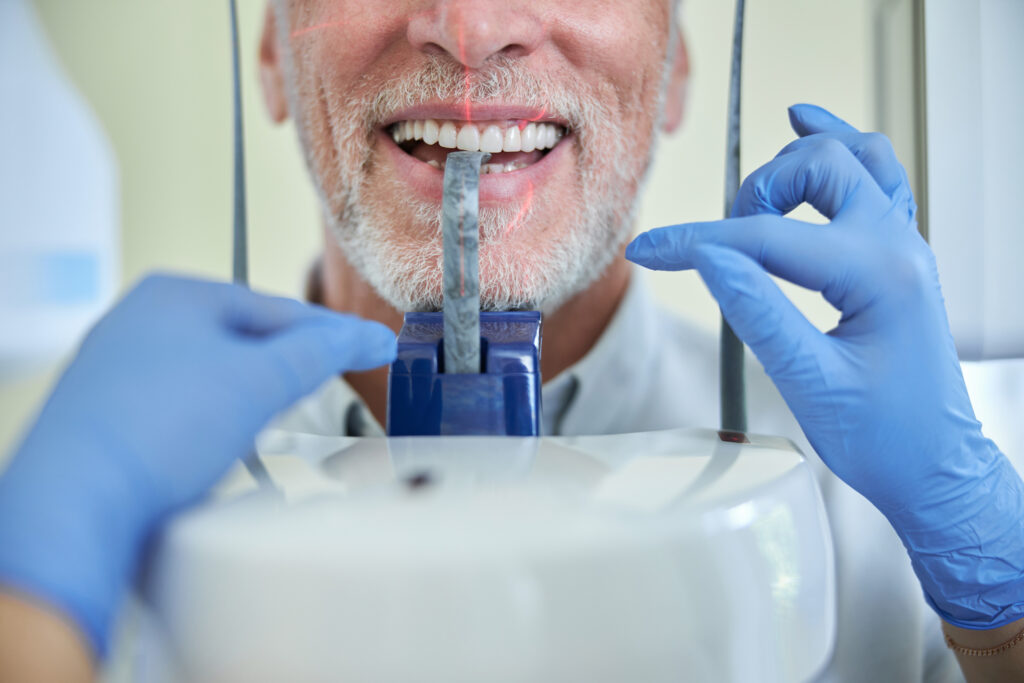
The Importance of Crowns
Over time, our teeth can weaken and become more susceptible to issues such as:
- Decay
- Cracks
- Discoloration
If your smile isn’t what it once was, crowns can help you recover its strength and appearance. If your dentist notices that a tooth is decayed, weakened, or cracked, a crown may be necessary to prevent further problems. In such cases, fillings or bonding may not be sufficient.
Types of Crowns
Crowns can be crafted from various materials, including:
- Porcelain
- Porcelain fused to metal
- Full gold
For a natural look and feel, a porcelain-finished crown is often the best choice, as it can be matched to the shade of your other teeth.
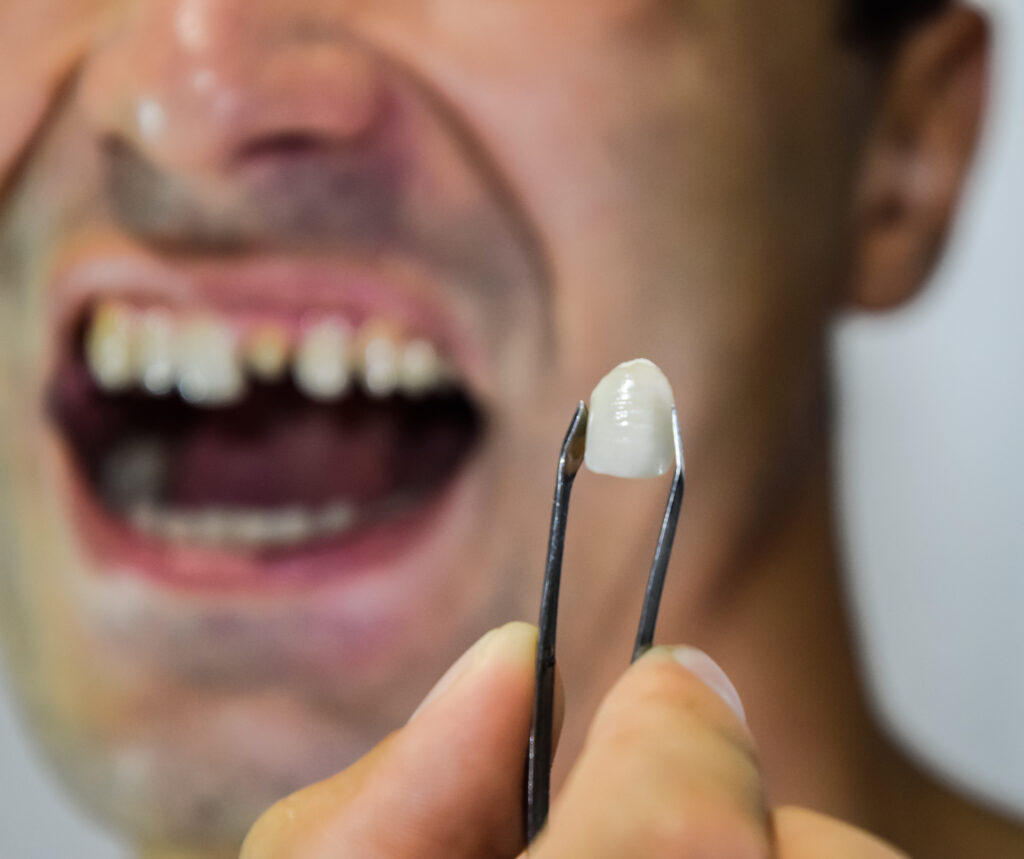
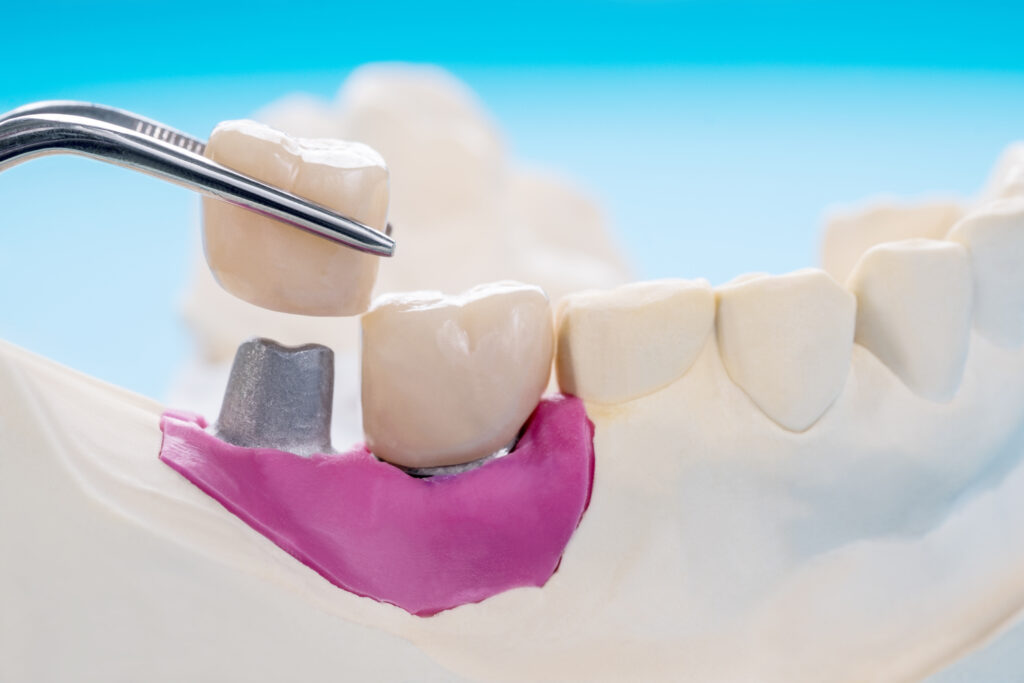
The Crown Installation Process
This procedure allows the crown to blend in seamlessly and appear just like one of your natural teeth. Installing a crown typically takes 2-3 visits to the dentist. On the first visit, the tooth is reshaped by filing down the enamel so the crown can fit over it. A local anesthetic is administered before this step to ensure you experience no discomfort.
Once the tooth is reshaped, a mold is taken of the tooth and the surrounding teeth. This mold is sent to a dental lab to craft your custom crown, ensuring it fits perfectly and blends with your other teeth. Before leaving, your dentist will fit you with a temporary crown to protect the tooth until your permanent crown is ready.
Placing the Permanent Crown
The permanent crown is usually ready in 2-3 weeks. During your follow-up appointment, the dentist will place and fit the permanent crown. A local anesthetic will be used again to numb the area, and the crown will be secured using dental cement to ensure it stays in place. When you look in the mirror, you’ll see your restored smile!
Durability and Care
Crowns are highly durable, typically lasting 10-15 years. To maintain your crown, care for it as you would your natural teeth—regular brushing and flossing are essential. Call us today to learn more about how crowns can help restore your smile.
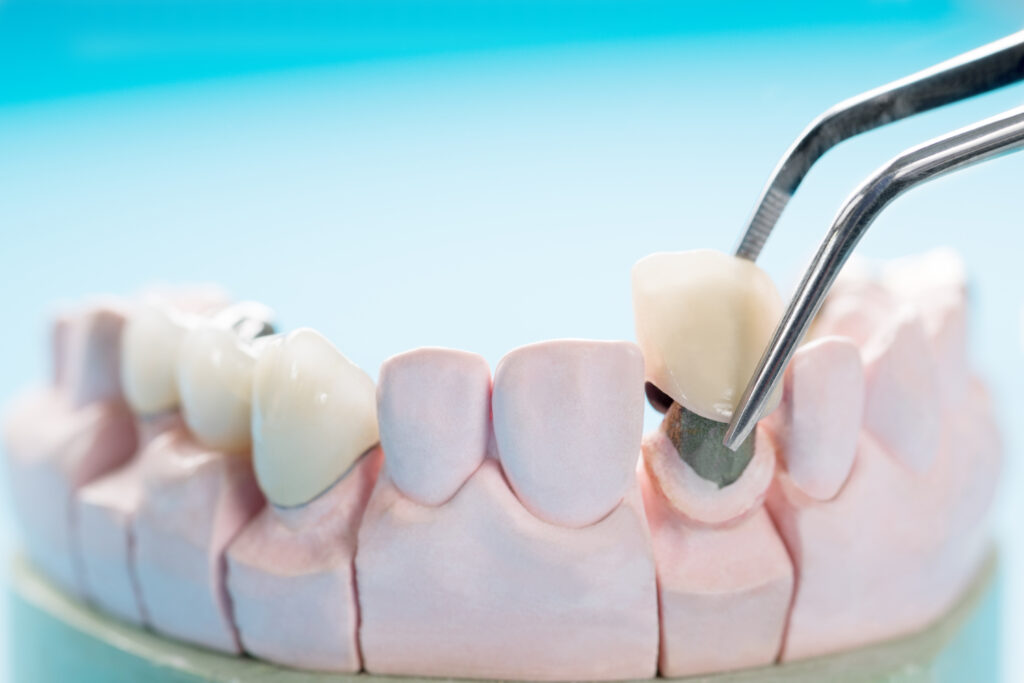
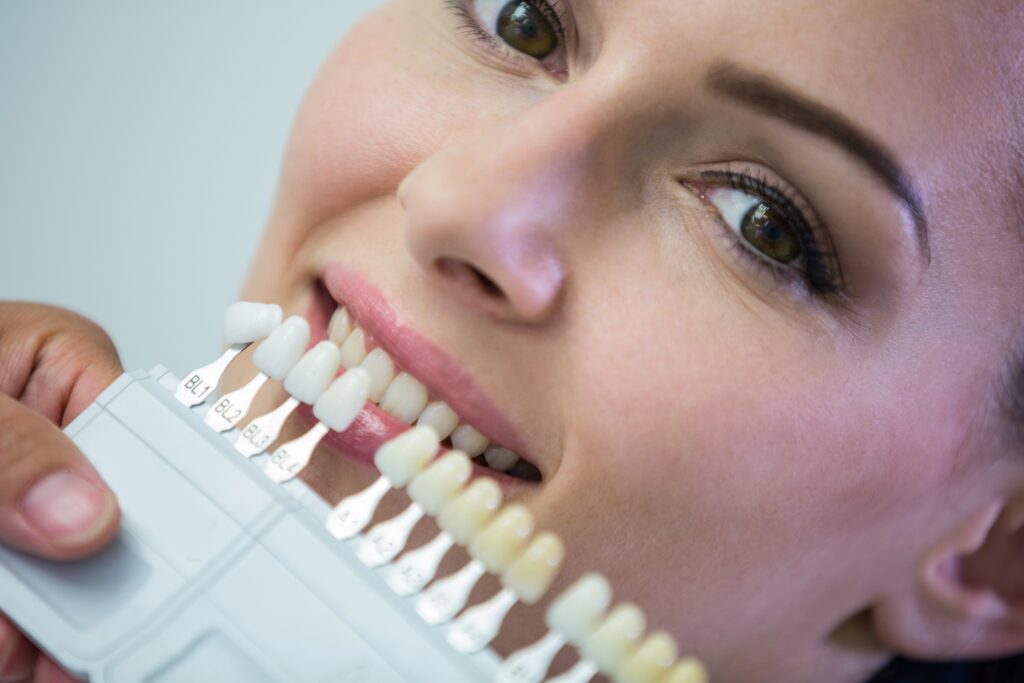
What Are Veneers?
Veneers are an excellent way to redesign and reshape your entire mouth. Veneers are a very thin ceramic shell that covers your existing tooth structure. By placing these new veneers on your teeth, you can fix the look of issues such as:
- Staining
- Cracked teeth
- Spaces
- Misaligned teeth
- Chipped teeth
- And many other concerns
The Veneer Placement Process
The process to place veneers typically takes approximately two to three visits. During the first visit, we will discuss the new shape and look we aim to achieve by placing the veneers. Once we establish a plan, we will carefully prepare your teeth for the placement of the new veneers.
Creating Your Custom Veneers
As we complete this piece of the process, the next step is to take an impression of the newly prepared teeth. This impression will be sent to our laboratory for the final product to be fabricated. We only utilize the highest standard laboratory for all our work. This process at the laboratory typically takes between 10-14 days. While the new veneers are being fabricated, we will provide you with a beautiful temporary solution to wear during this time.
Finalizing and Bonding Your Veneers
Once your veneers are finalized, we will ensure that they feel just like your natural teeth. We will carefully bond them into place, ensuring a comfortable fit and a stunning, long-lasting smile that you can enjoy for many years to come!


What Is Dental Bonding?
Bonding is a popular method to enhance the aesthetics of your smile. It can be used to:
- Correct cracks or gaps in teeth
- Serve as a filling after a cavity has been removed
- Cover up stains or discolored teeth
The Bonding Process
A composite resin is applied to the affected tooth or teeth. The process includes:
- Molding and sculpting the resin over an adhesive gel placed on the tooth
- Hardening the resin with an LED light
- Polishing the resin to create a fresh, natural-looking smile
Why Choose Bonding?
Bonding is a clear improvement over unsightly silver amalgam fillings. Thanks to advancements in dental technology, bonding can last for over 10 years. It is a safe, affordable, and attractive solution for many dental problems.

